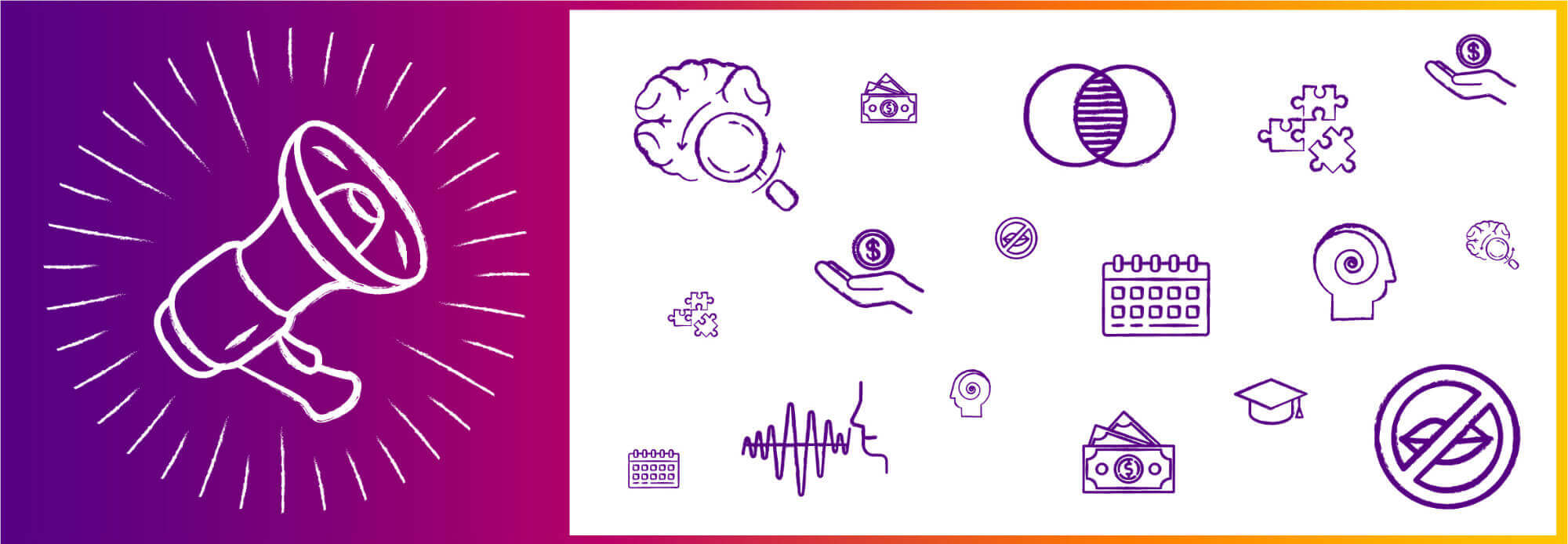As we embark on a holiday season unlike any we’ve experienced before, I’ve been ruminating on this question of what I can give and what I need to receive. I’d like to share this small offering with all of you. I’d like to encourage, and perhaps even model, giving ourselves the gift of feeling. The gift of fostering space to feel what we are feeling- right now, in this moment- and giving ourselves permission to feel that feeling in all its breadth and depth.

So, why the gift of feeling? In every training and workshop I’ve led over the past several months, I start by asking the participants to share one word for how they’re feeling. Every audience I have spoken to- educators, administrators, clinicians, parents, and youth- have overwhelmingly shared the same two words: Tired and Overwhelmed. When I watch folks begin to fill up the chat with these two words over and over again, I find myself nodding along. I can relate to those two words on a visceral level, I can feel them in my body, and I can see myself in them.
In their book, “Burnout: The Secret to Unlocking the Stress Cycle” sisters Amelia and Emily Nagoski share that emotions are neurobiological responses that have a beginning, a middle, and an end. They are like tunnels, and you need to move all the way through them to reach the light at the end. Emotional exhaustion, defined as “caring for too much for too long,” can happen when we get stuck in an emotion and don’t feel able to move all the way through it. We can get stuck in that emotion for a variety of reasons, such as when the stressor (the thing causing the stress) is chronic and ongoing (like living through a pandemic). I also think we can get stuck in the emotion, because we don’t give ourselves the permission to feel and honor it.
Throughout our lives, we have received a lot of messages- both implicit and explicit- about feelings. We internalize these messages and create narratives for ourselves and others about what feelings are okay to have, what feelings are okay to share, and how long it’s okay to feel a feeling. A lot of these messages are based in a misconception that feelings are a choice, and perpetuate a lot of shame when we have a feeling that we deem inappropriate or unacceptable to feel or that we feel for too long. In their interview with Brené Brown on her podcast, “Unlocking Us,” the Nagoski sisters posit that we are often conditioned to believe that ‘we are thinking creatures that sometimes feel’ and offer a shift in thinking to one that recognizes that ‘we are feeling creatures who sometimes think.’ If we begin to understand feelings as neurobiological responses, it can allow us to conceptualize feelings not as choices our brains make but rather as responses our bodies are having. From that understanding, we can begin to see a way through that tunnel of emotion: if our feelings and stress are living in the body, then to release and move through them, we have to speak body language.
 After asking in my trainings about what people are feeling, I then ask folks to begin to cultivate some internal curiosity about how they are feeling and to begin to notice and track the physical sensations in the body. What does “tired” feel like in your body, today? Where in your body do you feel that overwhelm? What does it feel like? By bringing our focus to what our bodies are communicating to us, we are able to start to listen and respond. Maybe the tired I am feeling is making my shoulders hunch, my body sag, and my thoughts drift. By bringing my awareness to these physical responses, I may be able to allow myself to stand up, to stretch my arms over my head, and to shift where I am sitting to a place where I can open a window and feel cool, fresh, air on my face. Or I can take time during a quick break to splash cold water on my face, or walk briskly up and down the street for a few minutes. Then, I can pause again, and ask myself if I notice any changes, if my energy has shifted at all after doing any of these actions. These simple actions are opportunities to address how I feel, rather than try to stifle or ignore it.
After asking in my trainings about what people are feeling, I then ask folks to begin to cultivate some internal curiosity about how they are feeling and to begin to notice and track the physical sensations in the body. What does “tired” feel like in your body, today? Where in your body do you feel that overwhelm? What does it feel like? By bringing our focus to what our bodies are communicating to us, we are able to start to listen and respond. Maybe the tired I am feeling is making my shoulders hunch, my body sag, and my thoughts drift. By bringing my awareness to these physical responses, I may be able to allow myself to stand up, to stretch my arms over my head, and to shift where I am sitting to a place where I can open a window and feel cool, fresh, air on my face. Or I can take time during a quick break to splash cold water on my face, or walk briskly up and down the street for a few minutes. Then, I can pause again, and ask myself if I notice any changes, if my energy has shifted at all after doing any of these actions. These simple actions are opportunities to address how I feel, rather than try to stifle or ignore it.
This image of “light at the end of the tunnel” is one that has been shared in a lot of spaces lately. And while I remain incredibly hopeful for a way through this pandemic and reaching a new normal, I also don’t feel a lot of control over how we’ll get there. That lack of control is part of what contributes to my feelings of overwhelm (I wrote back in early April about this collective experience of profound and meaningful loss of control). Part of what can make it hard to allow ourselves to fully feel our feelings is that there can be a fear of losing control over them. I remember a loved one sharing after the loss of both his parents, that he couldn’t allow himself to feel anything- not love, not joy, not sorrow- for fear that the floodgates would open and the depths of his grief and despair would overtake him. Numbing becomes incredibly seductive to survive experiences that are outside of our control. I find myself often pulled towards numbing strategies- watching old episodes of a show I’ve watched 100 times, scrolling through social media and newsfeeds for hours, eating an entire box of Girl Scout cookies without even noticing; becoming mindless instead of mindful. And instead of layering on more guilt and shame as I notice myself doing these things- which may paralyze me even more- I try to acknowledge and investigate why I was numbing out and show myself a little compassion. This internal awareness and curiosity may allow me to shift, slowly, and incrementally. Sometimes that shift comes in a mindset. A late mentor of mine used to encourage a shift from conceptualizing a “break down” into a “breakthrough.” A breakdown often held a connotation for me as something negative and far outside my control, and therefore something I needed to avoid or reign in. A breakthrough has a connotation of empowerment: I picture myself in that dark tunnel beginning to pick out a path forward.
Sometimes the shifts we need are not about changing our behaviors but rather changing the attention we give ourselves and what we are doing. In talking about self-care, even as someone who preaches it, I can often feel the burden of it being one more thing I don’t have time to do. But if I can bring attention and awareness to the things I already do, I may find that I have the capacity to care for myself a lot more often than I realized. I can notice how it feels to rub lotion on my dry, cracked, constantly washed hands. I can pause as I do it, and not rush to the next task, but take a moment to notice the sensation of doing one small act to care for my body. I can give myself permission to be a couple minutes late to a meeting to get myself water, and as I sit in the meeting, I can remind myself to drink that water, and notice the sensation of what it feels like to drink it, and how my body feels after. I can shift my thinking when I go for a run, and notice the difference of running through this experience rather than from it.
As we find ourselves approaching holidays that look and feel different, may we give ourselves- and those around us- the gift of feeling this moment. Our feelings may not feel like much of a gift- they may feel painful, uncomfortable, and difficult to hold. But if we can begin to acknowledge them, and share those feelings with others, we may find more opportunities for connection to ourselves and those around us. We may find that just by noticing what’s there, what is there begins to shift and evolve. We can give ourselves permission to feel it all, knowing that we do not have to feel it alone. And we can honor those emotions knowing that, just like this pandemic, there is a beginning, a middle, and there will be an end.
If you, or someone you know, needs support this holiday season, REACH is here. Our hotline is available 24/7 and can be reached at 1(800)899-4000.





